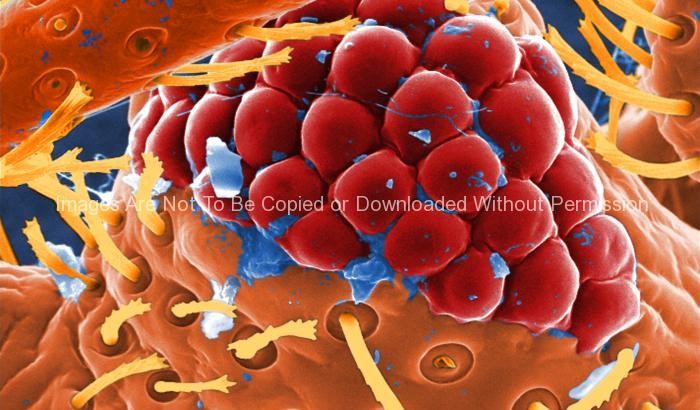This digitally-colorized scanning electron micrograph (SEM) revealed some of the ultrastructural morphology displayed on the head region of a bedbug, Cimex lectularius. Of interest is one of the insect’s compound eyes.
The compound eye is given this name due to the fact that the single large eye is really made up of many repeating units known as ”ommatidia”. Each ommatidium is composed of separate units made up of a photoreceptor cell, support cell, and pigment cells. Though each of these visual mechanisms functions as a separate organ, together they provide the organism with a ”compound” picture of its environment. Due to what is referred to as the ”flicker effect”, the compound eye is made very sensitive to movement, with each ommatidium turning on and off, as objects pass across its field of view. The bilateral anatomical placement of the insect’s eyes provides the organism with a very wide range of visual sensitivity.
